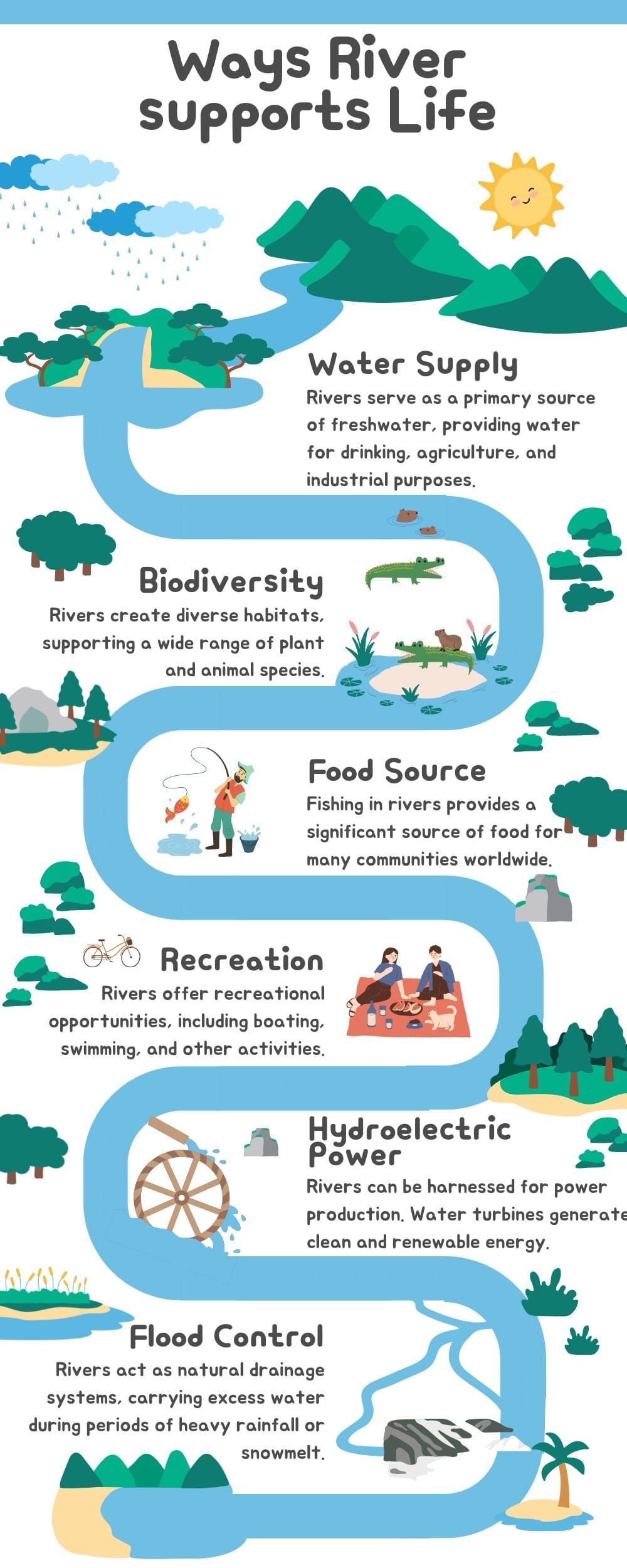Class 5 Exam > Class 5 Notes > Our Wondrous World Class 5 - New NCERT > Learning Poster: Journey of a River
Learning Poster: Journey of a River | Our Wondrous World Class 5 - New NCERT PDF Download

The document Learning Poster: Journey of a River | Our Wondrous World Class 5 - New NCERT is a part of the Class 5 Course Our Wondrous World Class 5 - New NCERT.
All you need of Class 5 at this link: Class 5
|
16 videos|144 docs|10 tests
|
FAQs on Learning Poster: Journey of a River - Our Wondrous World Class 5 - New NCERT
| 1. What are the main stages of a river's journey from its source to its mouth? |  |
Ans. A river's journey typically consists of four main stages: the source, the journey through the mountains (youth stage), the meandering plains (mature stage), and finally, the delta or mouth where it meets a larger body of water. The source is where the river begins, often in the mountains or hills. As it flows, it erodes the land, creating valleys and canyons. In the mature stage, the river slows down, creating meanders and floodplains. Finally, at its mouth, the river deposits sediments to form deltas.
| 2. How do rivers contribute to the ecosystem and human life? |  |
Ans. Rivers play a vital role in both ecosystems and human life. They provide habitats for a variety of wildlife, supporting biodiversity. Rivers also serve as a source of freshwater for drinking, agriculture, and industry. Additionally, they facilitate transportation and trade, and many communities rely on rivers for recreation and tourism. The nutrients carried by rivers can enhance soil fertility, benefiting agriculture.
| 3. What are the different types of river systems found around the world? |  |
Ans. There are several types of river systems, including the meandering river, which curves and winds through its valley; the braided river, which consists of multiple small channels that split and rejoin; and the straight river, which flows in a relatively direct path. Each type has unique characteristics shaped by factors like geography, climate, and geology. Different regions may have specific types based on these factors.
| 4. What impact do human activities have on rivers? |  |
Ans. Human activities significantly impact rivers in various ways. Pollution from industrial waste, agricultural runoff, and sewage can degrade water quality and harm aquatic life. Deforestation and urbanization can lead to increased sedimentation and altered flow patterns, resulting in flooding or erosion. Additionally, damming rivers for hydroelectric power can disrupt ecosystems and change the natural flow, affecting fish migration and sediment transport.
| 5. Why are river conservation efforts important? |  |
Ans. River conservation efforts are crucial for maintaining biodiversity, ensuring clean drinking water, and preserving ecosystems. Healthy rivers support a wide range of plant and animal life and contribute to the overall health of the environment. Conservation initiatives help mitigate the effects of climate change, reduce pollution, and protect habitats. By prioritizing river health, communities can ensure sustainable water resources for future generations.
Related Searches





















